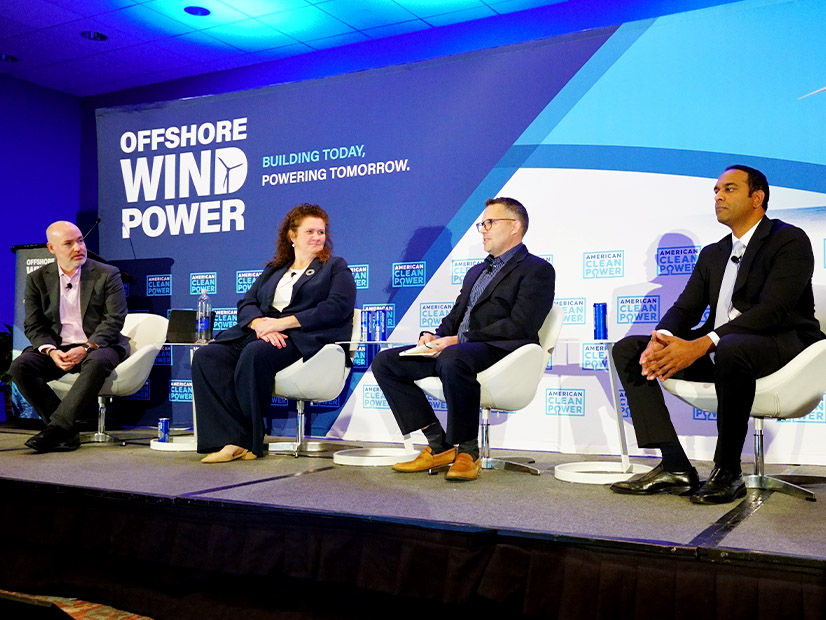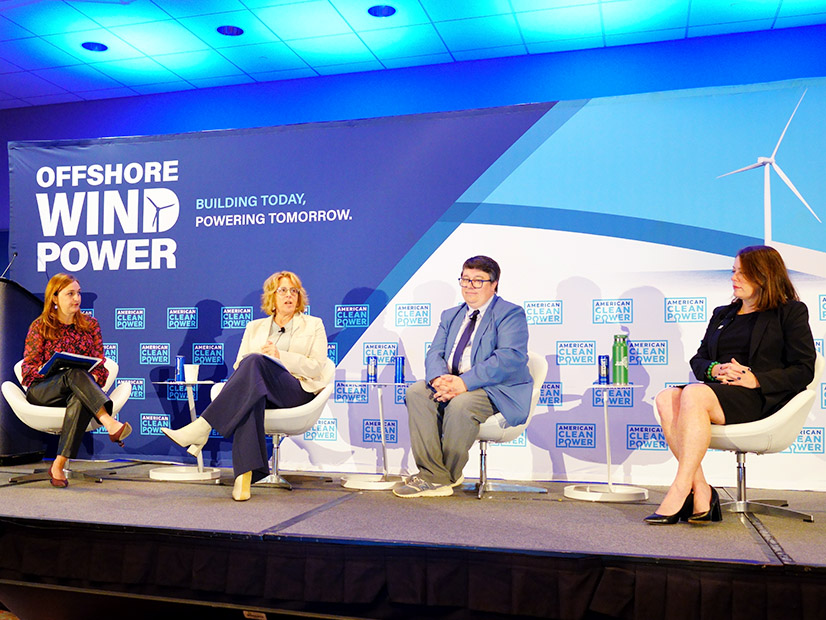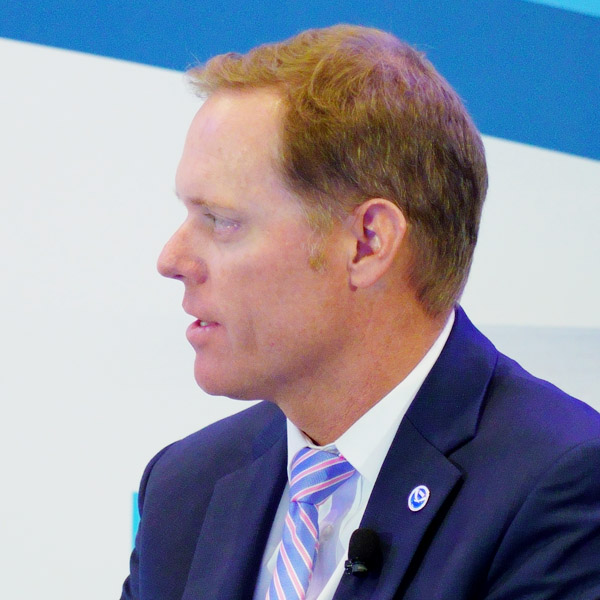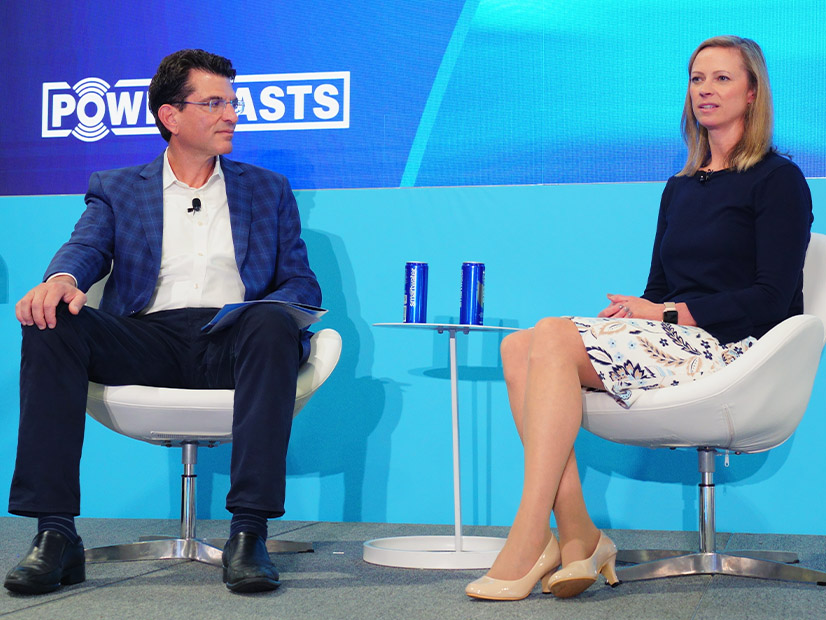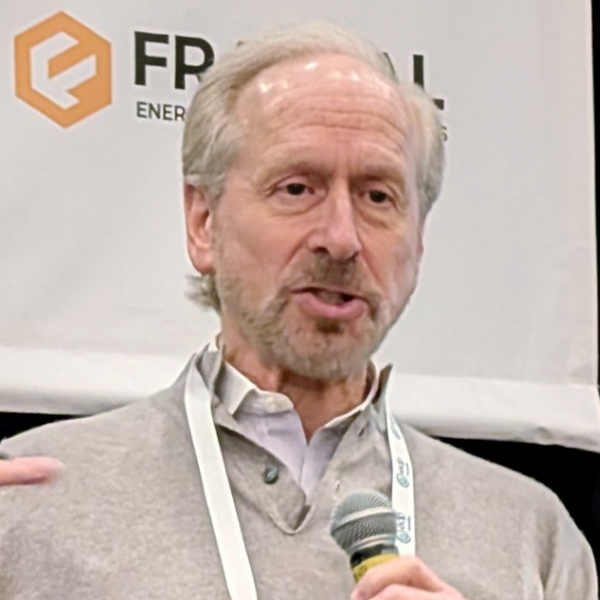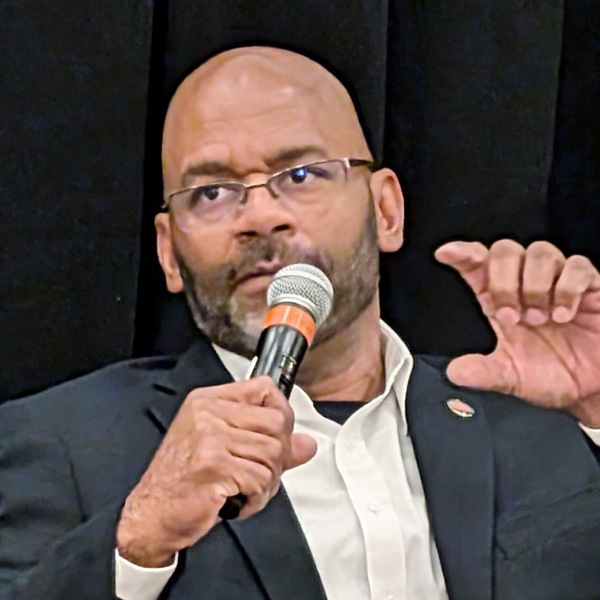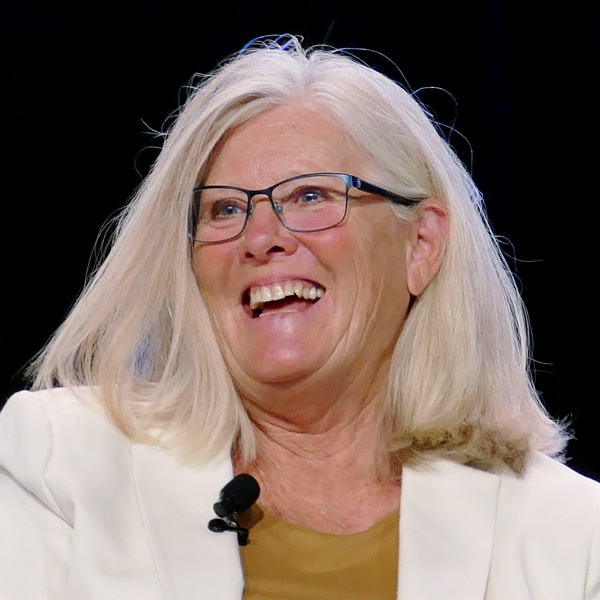ATLANTIC CITY, N.J. — Did anyone really expect the opposition to skip an offshore wind industry conference on the Jersey Shore, a focal point for protest and opposition?
If so, they haven’t been paying attention.
A cluster of protesters carrying signs and chanting slogans greeted nearly 2,000 attendees as they arrived at Offshore WINDPOWER 2024 on Oct. 29.
“Go home!” one woman screamed.
Later that morning, a chief commercial officer drew a laugh from her audience as she recalled the comments directed at her: “I apparently have sold my soul.”
Opposition to offshore wind is much more widespread than the two dozen or so protesters outside the Atlantic City Convention Center.
Countering opponents’ messages and building public support was one of the central themes of the conference.
Many speakers said getting steel in the water and electricity flowing to land would be the best countermeasure, because open-minded skeptics will recognize the economic and environmental benefits.
But amid industry struggles, such tangible progress has been slow to materialize. Until it does, most agreed, the best strategy is to get ahead of the curve, countering misinformation early rather than reacting after it festers.
Speakers at multiple panels explained how they are trying to do this.
Dan Fatton, clean energy partnerships director at the New Jersey Economic Development Authority, said: “The reality is that there is a vocal minority who have concerns. Some of those concerns are legitimate and some of those concerns are based on misinformation. And so part of the state’s approach has been to share factual information and try to dispel some of the misinformation that’s been purposefully spread.”
Just in the past few weeks, a website has been established to serve as an information hub for the various state agencies involved in offshore wind development; their datasets had been dispersed and could be hard to find.
But as many others noted, Fatton said promises kept are more convincing than promises made.
“I think for years — and myself, I’m guilty of this as well, as an advocate — we’ve promised to deliver jobs through offshore wind, and we need to make that a reality and not just a talking point or rhetoric.”
Megan Daly, chief commerce officer at the Port of Albany, N.Y., recounted a similar experience with the wind tower factory that was planned and then canceled on the riverfront. The site is sandwiched between one of the most affluent communities in the region and one of the least affluent. Opposition came mainly from the wealthier side.
“It was interesting to us what the different priorities were,” Daly said. “First, we received feedback related to traffic mitigation and transportation and really very basic concerns for people that live there, in addition to job opportunities, and just in addition to, ‘What does this mean for us, what does this mean for our community?’”
Sarah Salati of National Grid Ventures, the chief commercial officer heckled outside the convention hall, said her company recently introduced Doorstep, an app that customizes information about energy infrastructure projects to the community level, so people can see exactly what is planned near them and can actively participate.
It also has developed WhaleWatch, which allows the public to track migration of whales and see that the company’s offshore efforts are designed to minimize impact on the leviathans.
High technology is not just for the generation and transmission sectors of the power industry, Salati said. It can foster a better connection to communities and stakeholders: “There’s a lot of room to leverage that digital marketplace and digital forum for the benefit of our industry.”
For the record, there actually were two demonstrations outside the convention on opening day: offshore wind opponents shouting from a distance (police kept them on the far side of the driveway) and smiling proponents handing out bright green T-shirts at a table right outside the front door.
Frank Macchiarola, chief policy officer of the American Clean Power Association, looked at this as a good sign for the wind power industry.
“If you don’t have people either standing up or asking questions, then your projects and whatever it is you’re doing, you’re not relevant to the people,” he said.
Sid Nathan, vice president of external affairs at Rise Light and Power, described the company’s efforts to engage the community near its Ravenswood Generating Station — which, as the largest fossil fuel plant in New York City, is not popular with many neighbors.
For its first 60 years, Nathan said, Ravenswood was a wall and a barbed-wire fence to outsiders. Then Rise began bringing the public and stakeholders inside to see the operation, and started sharing redevelopment plans, which notably include retiring the fossil generation and using the waterfront site as a point of interconnection and logistics hub for offshore wind.
These efforts had a reset when an offshore wind proposal was withdrawn in mid-October, but they did not end. “We had the community basically on speed dial to ensure that they understood the steps that we’re going to take to move forward,” Nathan said.
Stephanie McClellan, executive director of Turn Forward, suggested “giving people the facts and not just trying to persuade them and sort of bulldoze over their concerns.”
The message matters, she added:
“The audience is persuadable based on exposure to both positive and negative messaging. We know that we can move an audience from opposition to support, 20 points to the good, with the right messages, we see that in our polling and message setting, but we also see that they go right back [with a] negative message.”
Julie Tighe, president of the New York League of Conservation Voters, pointed to health effects as an influencer.
“We’ve actually found the public health messaging is super effective. People really respond to that. That’s true across all environmental issues,” she said.
Cost also is persuasive, Tighe said: “You have no idea what gas is going to cost tomorrow, needless to say five years from now; you know what offshore wind is going to cost you 10 to 20 years from now, because they have locked in contracts.”
Equity for disadvantaged communities — a tandem goal of many policymakers pushing offshore wind development — is not a goal that wins over many people, Tighe added. Pursue equity, she urged, but do not count on it to be an opinion-maker.
Longtime New Jersey political strategist Michael Muller, president of Muller Public Strategies, said the conference was being held in the “epicenter of noisy activism” against offshore wind.
Donald Trump himself joined a boardwalk rally against the giant turbines earlier this year, near the southern tip of the Jersey Shore.
“One of the more important things is that just because there’s a noisy opposition doesn’t mean that they’re winning the day, but that is one of the challenges we’ve had,” Muller said.
Jobs and energy affordability are important kitchen-table issues, he added, but they can be countered by images of dead dolphins on New Jersey beaches.
“We sometimes have a little bit of a harder argument on the support side, because we do have to explain some of the benefits,” Muller said.
Rosanna Maietta, American Clean Power’s chief communications officer, summed up in a sentence what Muller and many other speakers explained at much greater length:
“If you’re on defense, you’re losing — you’ve got to be on offense all the time.”
